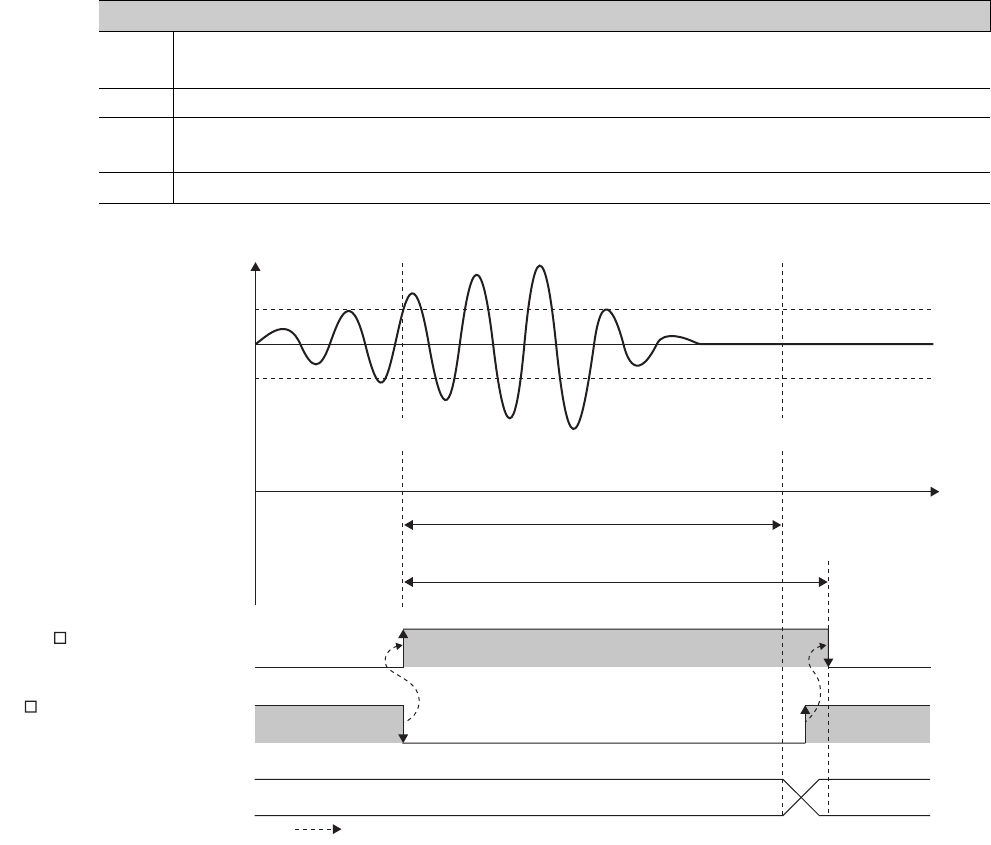
228
(5) Operation with vibration ST
This section explains the operation of when a control response is oscillatory (vibration ST).
With vibration ST, PID constants are automatically corrected to settle a vibration when a control response
becomes oscillatory due to reasons such as the change in the characteristic of a controlled object and conditions
for operation.
The following table lists the operations of the module with vibration ST. (The listed operations are those under the
state where temperature is being controlled with the PID constants set.)
(a) Conditions for vibration ST
Vibration ST is executed when the temperature process value (PV) goes outside the range that is judged as
stable.
(b) Precautions
If vibration ST is executed on the following objects, incorrect PID constants may be determined:
• Controlled objects where a disturbance periodically occurs
• Controlled objects with strong mutual interference
Operation with vibration ST
1
CH
PID auto-correction status (b0 of Un\G575, Un\G607, Un\G639, Un\G671) is turned 0 (OFF). In addition,
CH
Auto tuning status (Xn4 to Xn7) is turned on.
2 PID constants are calculated based on a response waveform.
3
PID constants are set in the buffer memory and CH
PID auto-correction status (b0 of Un\G575, Un\G607,
Un\G639, Un\G671) is turned 1 (ON).
4
CH
Auto tuning status (Xn4 to Xn7) is turned off.
Temperature process value (PV)
Set value (SV)
Oscillation detected PID constants calculated
Response measured
Time
Before change After change
Self-tuning in execution
OFF
ON
OFF
Depends on previous
execution result
ON
CH PID auto-correction status
(b0 of Un\G575, Un\G607,
Un\G639, Un\G671)
PID constants
CH Auto tuning status
(Xn4 to Xn7)
Executed by the Q64TCN


















